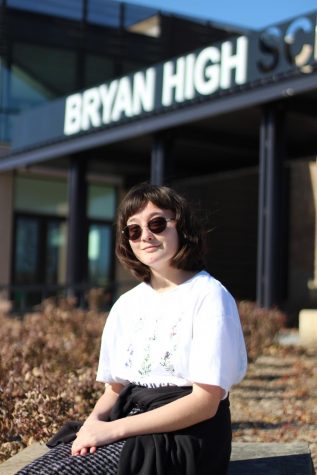Emotional support dogs join ranks at local schools
February 21, 2020
Therapy dogs have started to be a part of schools more often in the last 10 years.
Both Lewis and Clark and Norris middle schools have therapy dogs.
“If everything goes smoothly, therapy dogs would make a positive impact on the student body,” junior Aaron Coleman said.
At Lewis and Clark, their therapy dog, Hazel, was trained through the Domesti-Pups program and was approved by former principal, Dr. Lisa Sterba. There have been many positive effects noted at the school since Hazel’s arrival such as: higher self-esteem, happier classrooms and better interactions between students and teachers.
“I believe that Hazel can help students open up to their school counselors and help them feel more comfortable after they have experienced something scary,” counselor Josie Mcdonnell said. “Hazel has a way of making people feel good and safe.”
Hazel is kept in the back office.They take the dog to classes to play and spend time with students to better their mood and talk.
“Our students with allergies towards dogs are not affected unless they actually come into contact with the dog,” Mcdonnell said.
It’s also said that interacting with animals can lessen negative emotions and even reduce blood pressure and provide physical stimulation.
“Me, personally, when I see my dog at home it’s kind of an at ease thing and it’s relaxing and refreshing and calming,” social worker Jennifer Sather said.
Therapy dogs aren’t considered service animals. They aren’t trained to help with an individual’s mental or physical disability and are instead focused on offering companionship and are used as part of a medical treatment plan.
“I’m so relaxed petting this dog and so they [the students] just start talking and don’t realize,” Sather said.
Due to the beneficial effects, Bryan is open to the possibility of welcoming such animals to the school, though no action has been taken.
“I’ve talked to a couple administrators about it and, like I said, we have those levels of support in our school,” Sather said. “Maybe like, five more years.”

